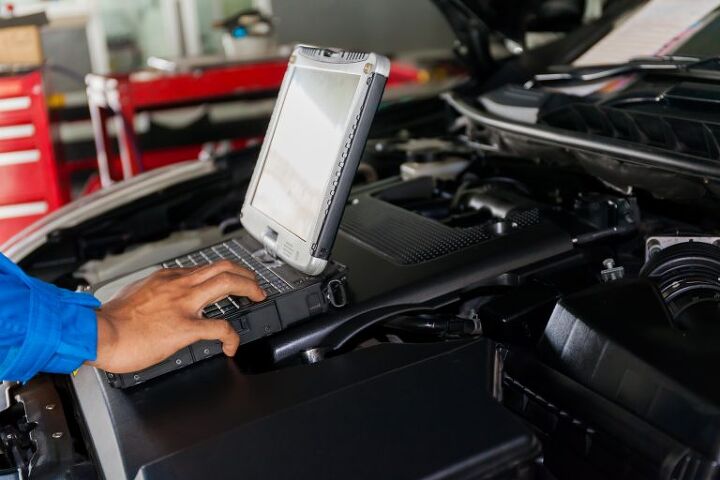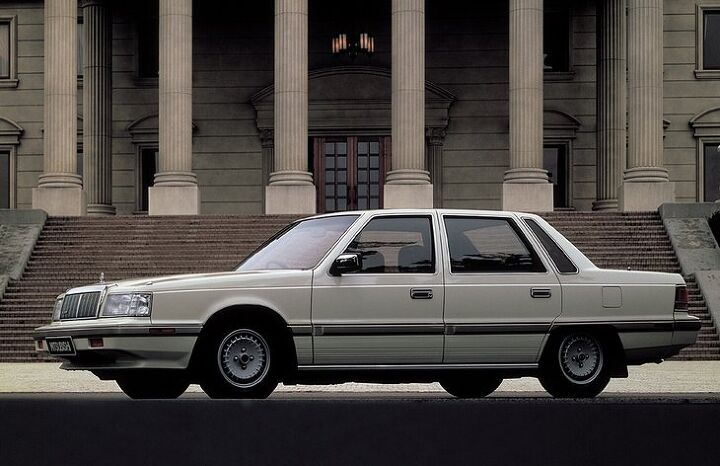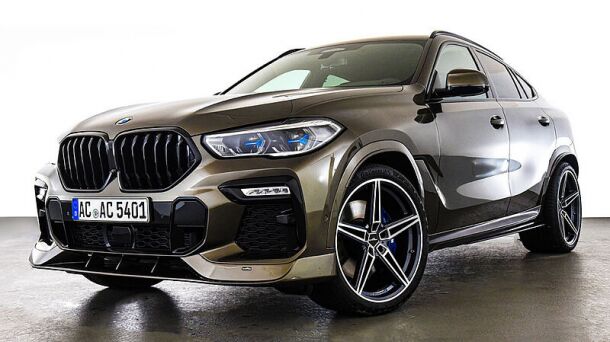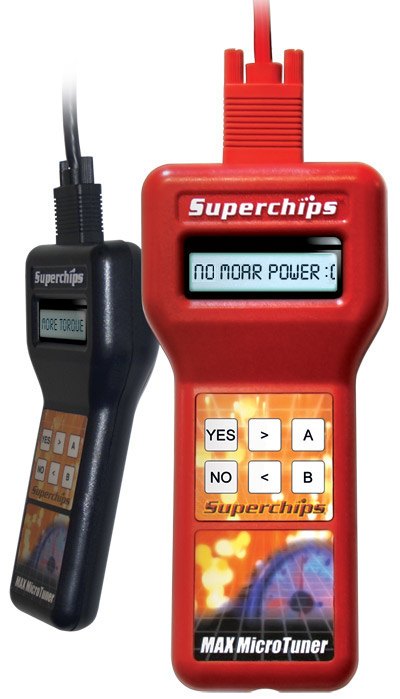#Tuning
Opinion: Big Fines and EPA Crackdowns Spell Big Trouble for Speed Shops
Opinion: You Should Not Tune Your Daily Driver
The Fast and Furious franchise gets a lot wrong when it comes to tuning cars – but what thing it gets mostly right is the spirit of family that comes with that lifestyle.
“ Normal people don’t tune their cars,” the great Jack Baruth told me, years ago. “Normal people buy Camrys and don’t think about their cars at all until it’s time to buy their next one.”
Yes, Virgina, You Can Tune Electric Cars
Tuners. Hot-rodders. Street racers. They’re called by different names, come in different shapes and sizes, and wave flags of loyalty to all manner of bizarre and obscure icons, but they all share the same basic desire: To take a perfectly good car and make it go faster.
For these enthusiasts, “more” is never enough, and “too much” is usually when things are just getting started. In the past, the way to go faster was to stuff a bigger engine into a smaller car. As the genre became more nuanced, more carburetors were added along with freer-flowing exhausts to get more air and fuel into that engine. That drive eventually led to fuel injection, forced induction, dual-fuel setups, and more.
Rare Rides: The Sporty and Very Rare 1991 Mitsubishi Debonair, by AMG (Part III)
Today marks the final installment in our Mitsubishi Debonair saga, which began a couple of days ago. We talked origins and its eventual demise, and today we’ll cover the little AMG part in the middle.
Rare Rides: The Sporty and Very Rare 1991 Mitsubishi Debonair, by AMG (Part II)
Last time on Rare Rides we introduced Mitsubishi’s Debonair, which began its tenure as Mitsubishi’s flagship luxury sedan in 1963 and remained the same for a very long time. Upon the model’s second generation in 1986, the Debonair made the switch to front-drive and adopted more modern looks in an attempt to appeal beyond very conservative large sedan buyers in Japan.
But the changes still weren’t enough, as we’ll see today.
Rare Rides: The Sporty and Very Rare 1991 Mitsubishi Debonair, by AMG (Part I)
Today’s Rare Ride is the second attempt Mitsubishi made to build its own full-size executive car for the Japanese Domestic Market. Debonair never moved outside its home market, and always played third fiddle to competition from the likes of Toyota Crown and Nissan Gloria (then a Prince model). Today’s example goes slightly further and adds AMG flavor to the front-drive mix.
There’s a lot of information to cover here, and today we talk about the model’s beginnings.
BMW X6 by AC Schnitzer – Is It Worth the Effort?
German tuning specialist AC Schnitzer has heralded the introduction of their version the BMW X6 Sports Activity Coupe (SAV), itself neither a coupe nor a proper sporting vehicle.
Rare Rides: The 1994 Isuzu Trooper That's Bighorn and Irmscher
Rare Rides featured Isuzu vehicles on four previous occasions, and all of them were from the Seventies or Eighties.
Today we switch it up a bit and present an Isuzu from the Nineties. Ready for Irmscher?
Tips and Advice: The Case for OEM Replacement Tires
The first thing that many people do when their new car is ready for its first set of replacement tires is to ditch them for something else. Whether that’s a tire with a high tread mileage guarantee, an ultra-grippy tire, or the cheapest thing they can find, few people actively seek out the exact same tires that their vehicle came with from the factory.
If OEMs could have just selected the best-rated tire from the Tire Rack website, or asked people on a forum what they preferred, and called it a day, wouldn’t they have done that? If you think you’re smarter than an entire team of OEM engineers, then go ahead and slap on that 80,0000-mile-guaranteed set of tires. But, you will want to understand what you might be giving up in the process.
Rare Rides: This 1975 Chevrolet Is Both Vega and Cosworth
An enterprising GM executive, a British tuning company, and a compact hatchback came together in 1975 to make a very special, limited-production Chevrolet.
It’s the Cosworth Vega, naturally.
Drive a New Civic? Got a Tax Refund? Time to Add Power
Honda’s new Civic is a heck of a car, even if the styling is polarizing. But it’s not a performance car like Civics of old, where mixing and matching engine and transmissions from other models could yield a very quick ride with a stratospheric redline. Enthusiasts are anxiously awaiting the Si and Type-R trims, which promise plenty of power — but what of those who already have a car, or need features the high-performance cars don’t have?
Enter Hondata, the firm that’s been tuning Honda engine management systems for years. It’s been the industry leader for those looking to do those engine swaps, and has developed software and devices to add performance to the factory ECU.
Recently, Hondata released its FlashPro for the newest Civic powered by the 1.5-liter turbo engine, and I had a chance to drive a Hondata-tuned 2017 Civic.
Even stock, the new turbo Civic is faster in the quarter-mile than the previous-generation Civic Si, so the extra performance should be impressive.
Harley-Davidson Super-Tuned Itself Out of $15 Million
The most American of motorcycle manufacturers has agreed to pay a $15 million settlement after the Environmental Protection Agency accused it of selling illegal aftermarket tuning kits.
The company’s “Screamin’ Eagle” super tuners, sold since 2008, cause motorcycles to emit excessive amounts of air pollution, the EPA claims.
Exclusive: Say Goodbye to Chip Tuning – Open CAN Bus Going Away in Two Model Cycles
According to someone that I consider to be an impeccably reliable source, you can say goodbye to being able to fiddle with your car’s electronic control devices to make it go faster because chip tuning and the open CAN bus that allows it are going away.
Section 1201 and Automotive DRM: The Future is Locked
This is the Renault Zoe. It’s like most EVs on the road, with its limited range, limited power, and limited usability.
Unlike the other EVs, however, the Zoe comes with DRM attached to its battery pack. In short: If you value your ability to drive the Zoe at all, then you will submit to a rental contract with the pack’s manufacturer. Should you fail to pay the rent or your lease term expires, Renault can and will turn your Zoe into an expensive, useless paperweight by preventing the pack’s ability to be recharged, consequences be damned.
Ford Engineer Uses OpenXC to Build Haptic Shift Indicator
When cars started getting digitized, first with fuel injection, then electronic ignition and ECUs, some enthusiasts thought that would foretell the end of hot rodding. That’s proved to be a false prophecy, what with developments like the Megasquirt engine management system, high performance “chips” and tuning via the OBD port. Last year, Ford Motor Company, which has been at the leading (some say bleeding) edge of in-car electronics and infotainment, announced the release of the OpenXC Platform. OpenXC is an application progrmaming interface, API, that makes information from the car’s various instruments and sensors available to Android applications. The idea was to open up that information to all the possibilities with which open source application developers and hobbyists might come up. The system is read only, to prevent you from damaging your car, or worse, creating an unsafe driving situation, but in terms of using that information, the possibilities are endless. To promote OpenXC, Ford has released a video of a haptic shift indicator, built into the shift knob, invented by one of their junior engineers, Zach Nelson. When you feel it vibrate, it’s time to shift.
Using a haptic feedback motor from an Xbox 360 controller, an Arduino controller, and an Android based tablet with some USB and Bluetooth hardware Nelson created a programmable haptic shift indicator that he then built into a custom shift knob that he had designed in a CAD program and printed out with a MakerBot Thing-O-Matic 3D printer.
Using engine speed, throtle position, and other engine control data, Nelson programmed different modes that tell the driver when it’s ideal to shift up (or theoretically, down as well, I suppose, if you add in data from the traction control systems). Programmed for performance, the shift knob will vibrate when approaching redline and if economy is what the driver is after, it will buzz at the best shift point for optimum fuel mileage, it can even have a tutorial mode to help drivers learn how to shift a manual transmission. For “fun”, Nelson installed a LED display on the top of his custom shifter that shows the gear position.
As part of the open source ethos, Nelson and Ford have made all of his design files, the firmware, the Android application for programming the device, and the CAD file for the shifter knob, available to the public with links at the OpenXC site. The idea is to let enthusiasts further develop the idea.
OpenXC will be available for a growing number of Ford vehicles. In the video, Nelson says that the latest car he’s tested it on is the Shelby GT500 Mustang. He talks of his sense of accomplishment when his invention worked with the 662 horsepower muscle car. My guess is that in that particular app, he had it programmed to shift at redline.





























Recent Comments